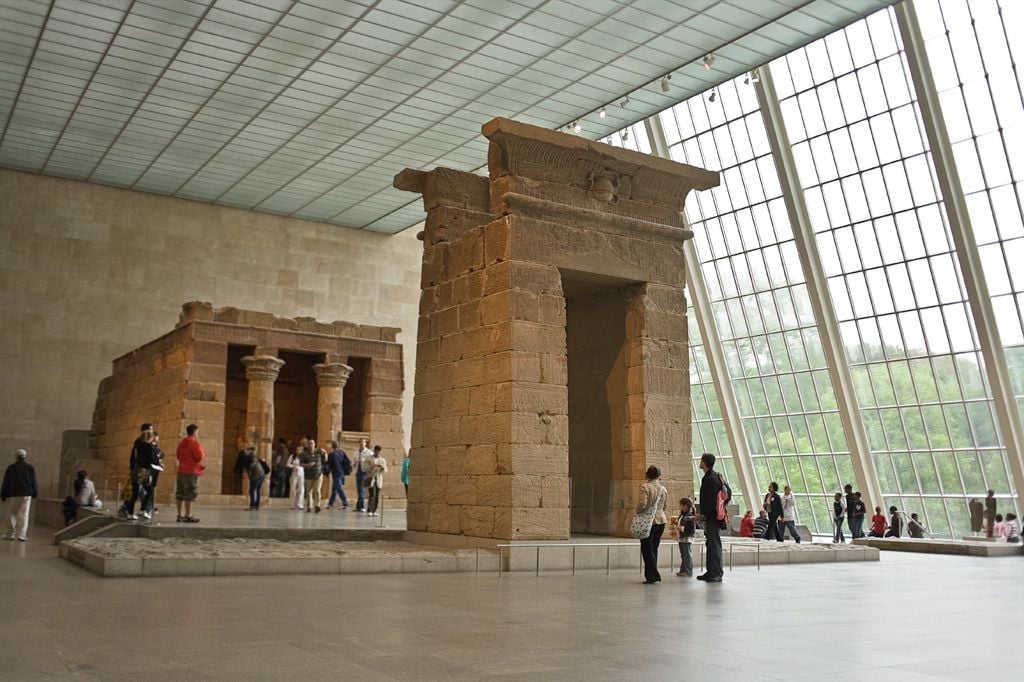
The art world’s reckoning with the Sackler family is poised to continue as the company they founded, Purdue Pharma, pleaded guilty this week to criminal charges over its marketing of the addictive painkiller OxyContin. The deep-pocketed philanthropists, who used their ample wealth to support cultural institutions around the world, will personally pay $225 million in civil penalties as part of the $8.3 billion settlement.
Many cultural institutions have broken ties with the Sackler family over their business practices. Most recently, reports Hyperallergic, New York University announced yesterday that the Graduate Biomedical Institute at its Langone Medical Center would remove the Sackler name. (It stopped taking Sackler money in June 2019.)
Now, in light of the settlement, other institutions—including New York’s Metropolitan Museum of Art—may follow. Back in 2019, the Met pledged that it would take no more money from the Sacklers, but said that there were no plans to change the name of its Sackler Wing. Following Purdue Pharma’s guilty plea, a Met representative told Artnet News in an email that the name “is under review.”
Information about the Sackler Institute established at New York’s Dia Art Foundation in 2016 has also been removed from the institution’s website. Press representatives for the organization did not respond to inquiries from Artnet News about when or why the Sackler name was taken down.
Nan Goldin leads a demonstration at the Harvard Art Museums on July 20, 2018, to protest the benefactor of the Sackler Art Museum. Photo by Erin Clark for the Boston Globe via Getty Images.
In a statement issued after the settlement was announced, descendants of Mortimer and Raymond Sackler said members of the family who served on Purdue’s board acted “ethically and lawfully” and that they reached the agreement “to facilitate a global resolution that directs substantial funding to communities in need, rather than to years of legal proceedings.”
Opponents of the Sacklers argue that the settlement is too lenient, with the fines representing just two percent of their estimated net worth of $13 billion, according to the New York Times.
Leading the charge against the family has been artist Nan Goldin, who founded the advocacy organization Sackler P.A.I.N. after recovering from her own painkiller addiction. After Goldin threatened to cancel a planned exhibition at London’s National Portrait Gallery, the museum rejected a $1.3 million gift from the Sacklers.
Despite the settlement and growing backlash, however, the Sackler name remains in place at a number of prominent institutions. One of the two art galleries that make up London’s Serpentine Galleries is still called the Serpentine Sackler Gallery, though the organization pledged last year that it would no longer accept donations from the family.
“Our trustees have noted the latest developments and we will let you know if any changes are planned,” a museum representative told Artnet News in an email.
Protests against the Sackler wing at the Louvre. Photo courtesy Sackler P.A.I.N.
Other spaces that still bear the Sackler name include two at the American Museum of Natural History—the Sackler Institute for Comparative Genomics and Sackler Educational Laboratory—as well as the Sackler Center for Arts Education at the Solomon R. Guggenheim Museum.
In London, there are the Raymond and Beverly Sackler Rooms at the British Museum; the Sackler Courtyard at the Victoria & Albert Museum; the Sackler Room at London’s National Gallery; and the Sackler Escalator at the Tate Modern. (The Louvre in Paris quietly removed the Sackler name from its wing of Oriental antiquities in 2019.)
The Natural History Museum and the Tate have stopped taking donations from the family, but V&A director Tristram Hunt has stated he is proud of the institution’s Sackler support.
The National Gallery—the only institution listed above that responded to a request for comment by press time—told Artnet News that “this was a historic donation and therefore there are no current plans to change the name of the room.”
The P.A.I.N. protest at the Smithsonian’s Freer Sackler Galleries in April 2018. Images via Instagram @P.A.I.N. Prescription Addiction Intervention Now.by
Complicating matters are the various branches of the Sackler family—not all of which have profited from the sale of OxyContin. Purdue Pharma was founded by brothers Arthur, Mortimer, and Raymond Sackler, but Arthur’s one-third share in the company was purchased by his brothers upon his death in 1987, eight years before the drug came to market.
Cultural institutions named after the Arthur Sackler branch of the family include the Elizabeth A. Sackler Center for Feminist Art at the Brooklyn Museum, named for his daughter, and the Smithsonian’s Arthur M. Sackler Gallery in Washington, DC, named in honor of his donation of $4 million and more than 1,000 works of Asian art.
In December, the Smithsonian announced that the Sackler Gallery and its other Asian art museum, the Freer Gallery of Art, were being collectively rebranded as the National Museum of Asian Art. The decision was reportedly an effort to promote a more unified identity for the two museums. There are no plans to remove the Sackler name (despite the efforts of one US senator).
“The donation agreement,” said the museum in an earlier statement, “requires the Smithsonian to designate the facility as the Arthur M. Sackler Gallery in perpetuity.”